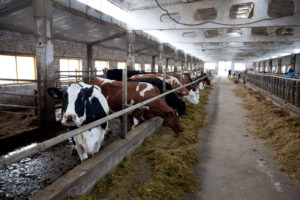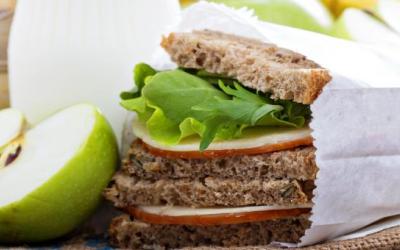Investments in fixed capital of the agro-industrial complex in 2023 exceeded 1 trillion rubles

Speaking about the implementation of the state program, Luth noted that last year 442.6 billion rubles were allocated for it, of which 99.9% were spent. “Preferential lending remains the most popular mechanism for us . By the end of 2023, banks had concluded agreements for a total of more than 1.3 trillion rubles. One of our constant priorities is supporting small businesses. In 2023, more than 20% of incentive subsidy funds were allocated to them from the federal budget ,” Luth noted ( quoted from the transcript on the government website). “In addition, over 6.2 billion rubles were provided to small businesses as part of the federal project “Acceleration of Small and Medium-Sized Businesses.”
During the meeting, Luth also reported that agricultural exports in 2023 grew to a record $43.5 billion, with processed product deliveries showing good dynamics. Thus, SUGAR exports increased threefold, sunflower and rapeseed oils - 1.5 times, and FLOUR deliveries exceeded 1 million tons for the first time in history, increasing by 25% compared to the previous year.
Georgy Ostapkovich, DIRECTOR of the Center for Market Research at the National Research University Higher School of Economics, notes that the results announced by the Minister for last year indicate positive dynamics in the industry, although this is not a fundamental increase. However, agriculture is influenced by many factors (weather, labor market, etc.), so investment growth does not guarantee an increase in crop yields. According to Ostapkovich, based on the gross added value of agriculture at 5 trillion rubles, its share in GDP (160-170 trillion rubles) is approximately 4-5%, and this is a standard indicator for the industry. It is still difficult to predict the results of agricultural activity this year, but, according to his estimates, the agricultural production index will be lower than last year due to late frosts and labor force problems.
Independent grain market expert Alexander Korbut draws attention to the fact that investments in the agro-industrial complex are the total investments in agriculture, the food industry, and beverage production. "This is a good indicator - more than 1 trillion rubles, but over the past six years, the volume of investments in the agro-industrial complex has been growing at a slow pace," Korbut notes. In June, Prime Minister Mikhail Mishustin said that by 2030, investments in fixed capital of the agro-industrial complex should grow by 60% compared to 2021, but to achieve this result, it is actually necessary to double the annual growth volume, the expert says. "This is an extremely difficult task, since most of the investment resources are the enterprises' own funds: both in agriculture and the food industry," Korbut commented. At the same time, agricultural producers have limited resources for investment due to the EXPORT duty on grain and oilseeds. As a result, only additional budget injections give hope for an increase in fixed capital, which, according to Korbut, is not entirely correct: own funds are a completely different level of responsibility for investors.
Gross added value — 5 trillion rubles — is calculated in current prices, and their significant growth in 2023 is included in this amount. "But in any case, it is good if it grows: at least to one degree or another, additional costs are recouped," Korbut believes. The growth of budget support to 442.6 million rubles is also positive, but more than half of this money goes to subsidizing interest rates on loans, with approximately 85% of it going to loans issued in previous years. "That is, the possibilities for increasing lending and, accordingly, investment, are very limited. This suggests that it is necessary to look for new mechanisms to attract investment in the industry," the expert is sure.
In the first quarter of 2024, the index of growth of investments in fixed capital of agriculture decreased to 92.2% compared to the same period last year, while in the food industry it was 104.2%. "I do not see much investment attractiveness of agriculture for private investments, and state investments are focused on immediate tasks to reduce and maintain prices for poultry products and breeding and seed production activities," says Korbut. But, he concludes, in longer-term issues, without investments there will be no technology, and, accordingly, no growth in productivity, and there is no investment without high profitability of producers.
Read together with it:
- The IEA sees a risk of a decline in oil production in Russia due to sanctions.The IEA sees a risk of reduced oil production in RUSSIA due to US sanctions , but maintains its production forecast. According to the IEA, Russian oil exports will remain unchanged.There is a "significant downside risk" to Russia's oil production forecast due to US sanctions, the International Energy Agency (IEA) said in a report.BLOOMBERG . The agency's experts believe that the latest US sanction...
- UniCredit заявил о галактических усилиях из-за санкций против РоссииUniCredit старается не нарушить «более 15 тыс. санкций», а также не «совершать ошибки», которые позволят изъять его активы в России, заявил гендиректор. После начала военной операции банк начал рассматривать возможность ухода Итальянский банк UniCredit прилагает «галактические усилия», пытаясь соблюсти международные санкции в отношении своего российского подразделения. Об этом заявил генеральный д...
- "Коллективы АПК способны решать любые задачи даже в непростых условиях". Назаров о заслугах сельхозпроизводителейЮрий Назаров 13 ноября, Минск. Обеспечение продовольственной безопасности страны - большое достижение трудовых коллективов аграриев, отметил управляющий делами Президента Республики Беларусь Юрий Назаров на торжественной церемонии награждения государственными и иными наградами работников АПК Управления делами Президента Республики Беларусь, передает корреспондент БЕЛТА. Торжественная церемония наг...
- Министр сельского хозяйства предлагает долгосрочные контракты для стабилизации цен на продуктыЛут подчеркнула, что за последние десять лет рост цен на основные продукты в России не превысил общий уровень инфляции, а в некоторых категориях даже отстает от нее. Тем не менее, наблюдается устойчивый рост себестоимости продукции из-за увеличения цен на технику, энергоресурсы и логистику. Для контроля ценовой ситуации министерство сотрудничает с депутатами и рядом других ведомств. Также она упом...
- Russian agriculture: self-sufficiency continues to growThe industry has a track record of implementing new technologies and increasing productivity. RUSSIA is already confidently self-sufficient in grain, MEAT, fish, vegetable oil, and SUGAR. Grain and vegetable production is also forecast to be higher this year, despite unfavorable weather conditions in some regions. The Ministry expects historic highs for some crops and continues to support agricult...
- Sustainable growth of the food and processing industries in BashkortostanIlshat Fazrakhmanov, Deputy Prime Minister andThe regional Minister of Agriculture noted that the development of these industries provides the population with essential food products and contributes to increased exports. Since 2020, agricultural exports from the region have doubled. Since the beginning of 2......
- Низкое предложение и устойчивый спрос: в Аргентине растут цены на мясоЦены на говядину снова выросли, что отразилось на полках супермаркетов и в мясных магазинах. За последние две недели розничные цены выросли на 8–12%, а на некоторые популярные отрубы рост превысил 15% по сравнению с октябрем. Тем не менее, продажи остаются высокими: потребители продолжают покупать, принимая новые цены и закрепляя тенденцию, которая повторяется каждый год в конце года, когда спрос ...



























































